How to Copy Path in File Explorer in Windows 10
In this article, I would like to share a number of methods you can use to copy the full path to a file or folder in Windows 10 File Explorer. While it is a trivial task, there are a few tidbits you will definitely find interesting and useful.
Advertisеment
File Explorer is the default file management app which is bundled with Windows starting with Windows 95. Besides file management operations, Explorer.exe also implements the shell - the Desktop, taskbar, desktop icons and also the Start menu are parts of the Explorer app. Note: In Windows 10, the Start menu is a special UWP app, which is integrated into the shell. Starting with Windows 8, File Explorer got the Ribbon user interface and the quick access toolbar.
Sometimes it is very useful to copy the full path to a file or a folder, especially when it is stored under the long directory hierarchy. You may need to upload a document online, or attach it to an email. In this case, browsing the file system is a time consuming task. If you already have the path to the file in the Windows clipboard, it can be retrieved with a single keystroke.
In Windows 10, there are several ways to use the copy as path command. It is available directly in the Ribbon user interface, from the file context menu, and from the context menu of the address bar. Let's review these methods.
To Copy Path in File Explorer in Windows 10,
- Open File Explorer.
- Navigate to the folder that contains your file.
- In the Ribbon user interface of Explorer, click Home > Copy path.
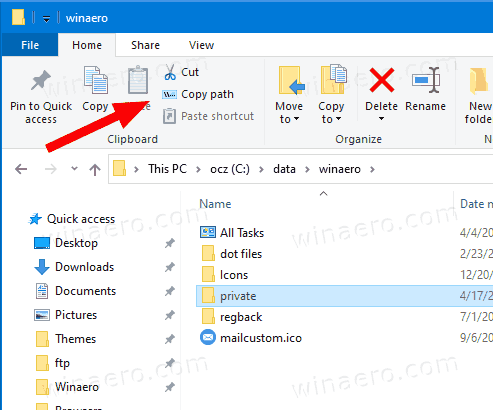
- Now, open Notepad and paste the clipboard contents (Ctrl + V). You will see the path to the file surrounded by quotes.
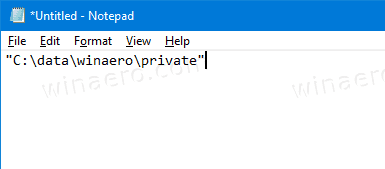
Alternatively, you can right-click the address bar in File Explorer and use the copy commands from there. This method only works for folders but not for files.
Copy Path from File Explorer Address Bar Context Menu
- Navigate to the destination folder.
- Right-click on the address bar.
- From the context menu, select Copy address as text.
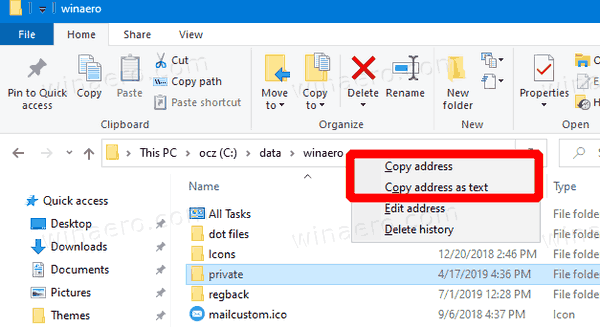
- This will put the path to the current folder to the clipboard without quotes.
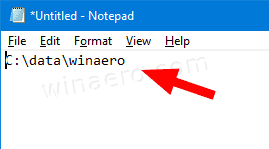
- You can also use the Copy address command. See the note.
You are done!
Note: You might be wondering what is the difference between the Copy address and Copy address as text commands. Technically, both allow you to copy the path and paste it to another app, e.g. Notepad. However, the Copy address command puts the folder (the file system object) to the clipboard, so you can paste it to another location or even in a different file management app like Total Commander.
Finally, you can simply click into the address bar area, so will become editable.
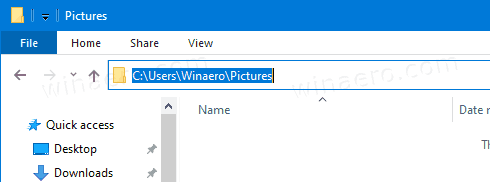
Also, you can move the cursor to that area by pressing Alt + L or Alt + D. Then simply press Ctrl + C to copy the path.
Copy Path from File Explorer Context Menu
- Open File Explorer.
- Navigate to the destination folder.
- Press and hold the Shift key and right-click a file or folder in File Explorer.
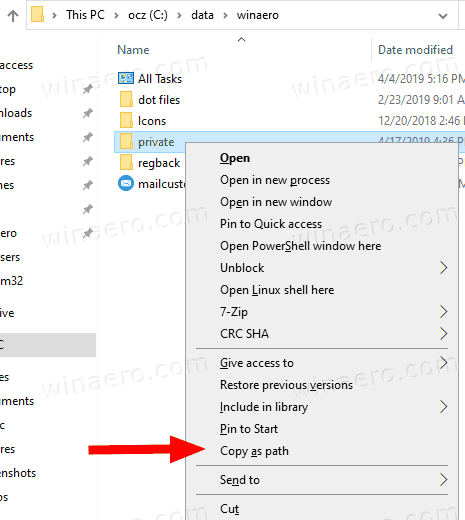
- A hidden command Copy as path will appear in the context menu.
You are done.
Tip: If you are frequently using the context menu option, it is a good idea to make the command always visible in the context menu. Check out the following post:
https://winaero.com/blog/get-copy-path-always-visible-in-context-menu-in-windows-10/
Paste Paths to Command Prompt and PowerShell Faster
Not so many people seem to be aware that it is possible to drag the desired file or folder directly to the command prompt window to paste it's path into the command prompt. This is extremely handy if you need to paste the path of the several files or repeat this task for many objects one by one.
Just select some file or folder in File Explorer and drag it to the opened command prompt. In the example below, I did that with the "private" folder:
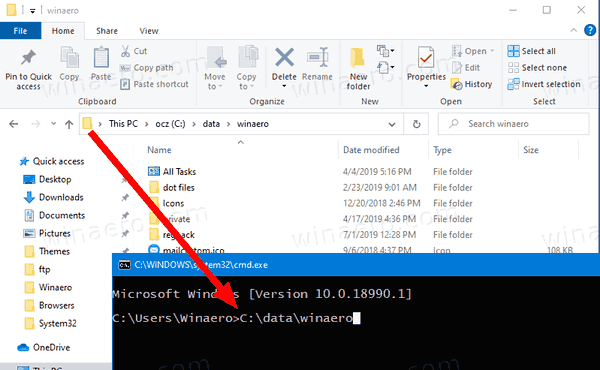
That's it!
Using Classic Shell? See How to add Copy as Path button to the Classic Shell Explorer toolbar.
Support us
Winaero greatly relies on your support. You can help the site keep bringing you interesting and useful content and software by using these options:
